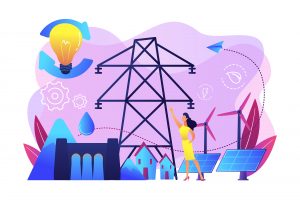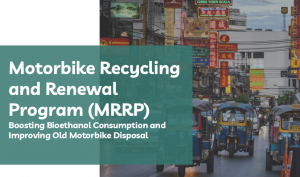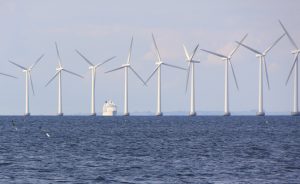The effect of energy use on social development and outcomes cannot be understated. From the use of fuel for cooking to renewable energy for electrification and heating, studies of country data positively correlate energy consumption and benefits to life expectancy, literacy rates, GDP and the Human Development Index.
A concept called the energy-development nexus is a central tenet in the theory and practice of development policy. The authors point out a less known side to this nexus in which distributed, sustainable energy provides a role in crisis settings and state building to empower vulnerable communities, such as conflict, refugee and other critically marginalised groups.
One study from the UK’s Department for International Development highlighted that in countries prioritised as fragile and conflicted-affected situations in 2014, 43% of the population had electricity access, compared to 58% in other countries. The situation has been characterised in a World Bank study as “a central economic dimension of the so-called ‘conflict trap’: a sub-optimal equilibrium whereby poor performance in the energy sector therefore not only results from violence, but may also be one factor that creates the structural conditions for a continuation of violence.”

The authors argue that consideration of multiple intersecting dimensions is required to address this effectively. Energy types (such as household fuel, electricity, and mechanical power) must be matched with energy infrastructure (such as centralised or decentralised), end users (including households, businesses, and community), level of access, service quality and access cost.
In any given context, design dimensions can be informed by practical considerations. For example, in conflict scenarios, there are added concerns that any investment into centralised production might end up vulnerable to attack. Theft and conscientious management by operators can pose other complications. By weighing up the scale of provision, consideration of options provided by modern decentralized electricity may supplement unreliable grid access, while also helping the environment in the case of renewable energy.
In their central outlook for the use of energy for peace, the authors cite studies on the microeconomic impacts of electrification in developing countries. Overall well-being was assessed to be improved. However, the impact across scenarios was varied. To better understand the conditions for promoting socioeconomic changes, the authors conclude there is an opportunity for academic researchers to collaborate with developers in project design, deployment and assessment.
They add that future implications must be considered in any design for electricity provision. This includes avoiding dependencies that could lead to vulnerability to high prices, and implementing modular systems which can adapt to future needs and grid connections. Importantly, local needs can only be effectively addressed by partnering with local communities, organisations and businesses.
The book’s main analysis comes from examinations of key crisis situations around the world, broken down into three parts. The first looks at how energy policy over coal has widened social divisions in Kosovo and Vietnam. In Kosovo, the lock-in of massive usage of domestic coal has continuously degraded the quality of life, especially among socially excluded people. In Vietnam, NIMBY objections to the location of a coal-fired power plant stirred tensions between the central and the local.

The second part explores how a different type of energy provision can help foster social inclusion. In Columbia, improvement to electricity access is vital for the large number of people displaced by past civil conflicts, not only for their livelihood but also for social inclusion. This mechanism is also identified in Myanmar, where electricity in refugee camps is a trigger for social inclusion.
The third part highlights the decision-making process in this context. In Rohingya camps in Bangladesh, the politics of energy development discourse are held far from the refugees themselves, endangering the mechanism of social inclusion examined in the previous part. In contrast, case studies in India have shown the importance of participatory decision-making for social inclusion. In South Sudan, the importance of recognising the relation between renewable energy and peace building is highlighted by its innovative financing mechanism called the Peace Renewable Energy Credit.
For each of these crisis settings, the authors offer their assessment for future energy development, including the roles of international organisations, local stakeholders and access programs, as well as opportunities for nation building and sustainability; which could one day encompass not only energy, but peace for all.
Publication information
Energy Policy for Peace, 1st Edition – August 23, 2023, Academic Press
Editors: Daniel Kammen, Hisashi Yoshikawa, Kensuke Yamaguchi
Paperback ISBN: 9780128173503
eBook ISBN: 9780128173510
https://shop.elsevier.com/books/energy-policy-for-peace/kammen/978-0-12-817350-3
Edited by Clement Ng
Image by creativeart on Freepik





